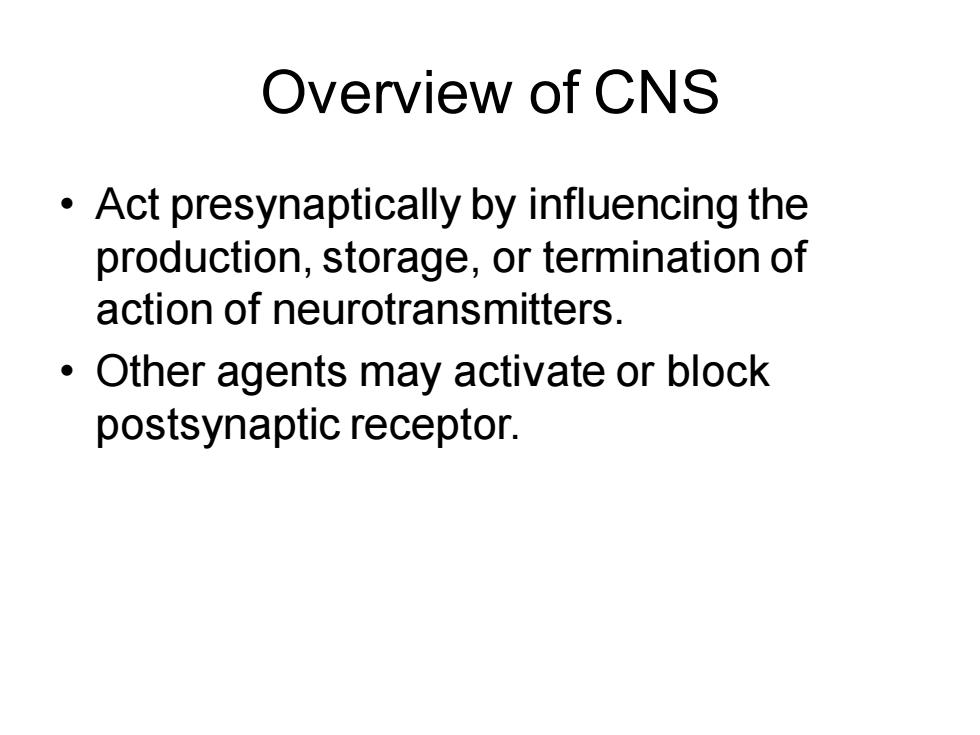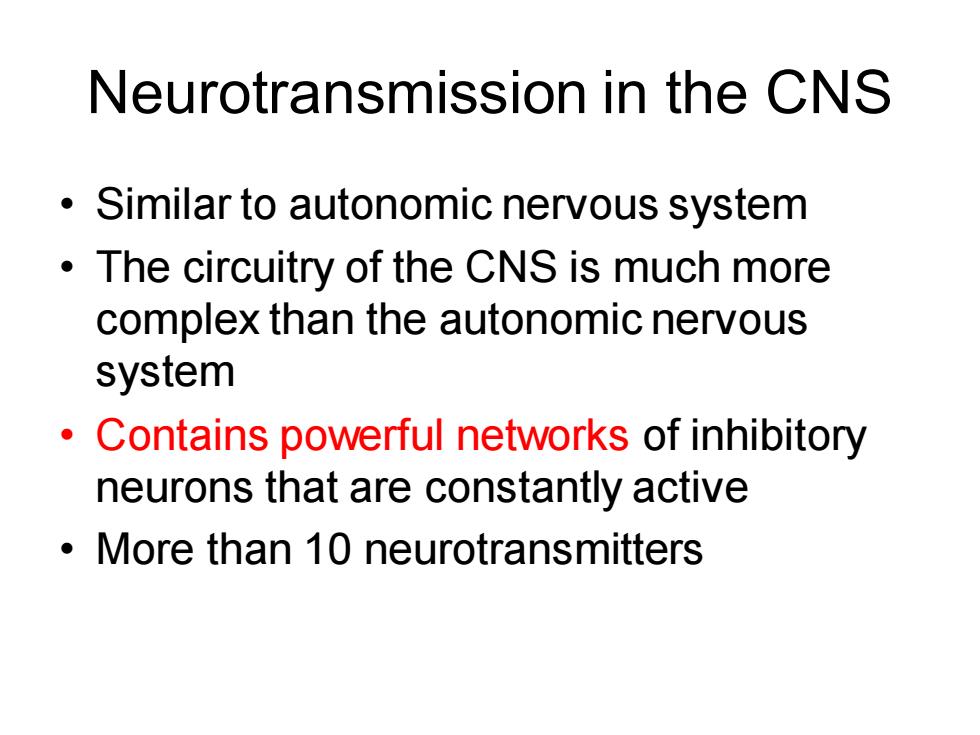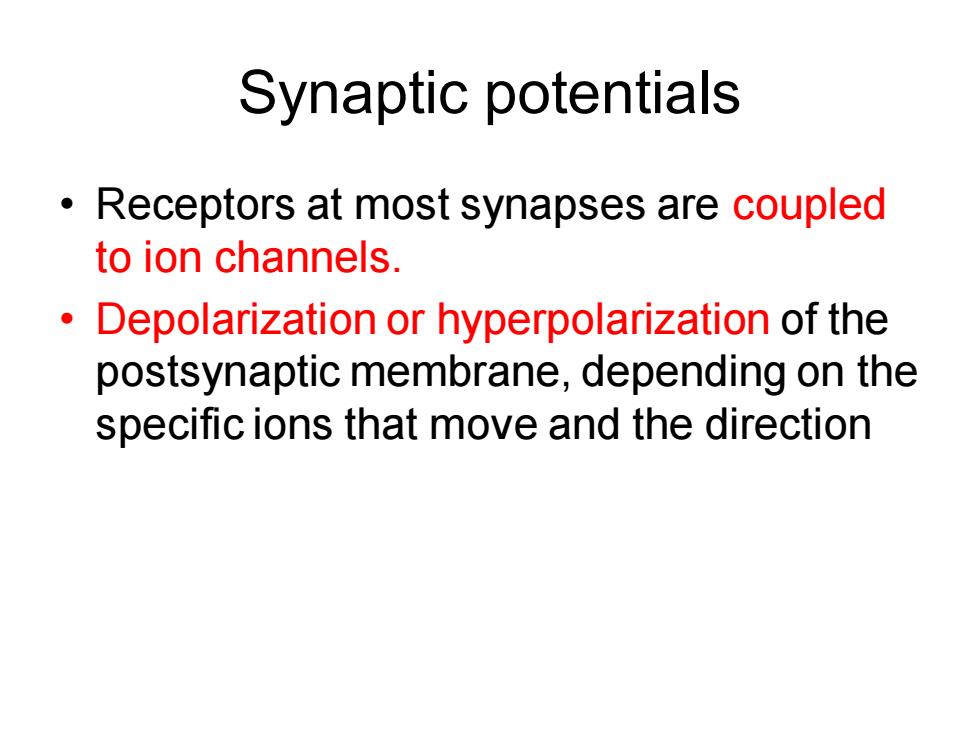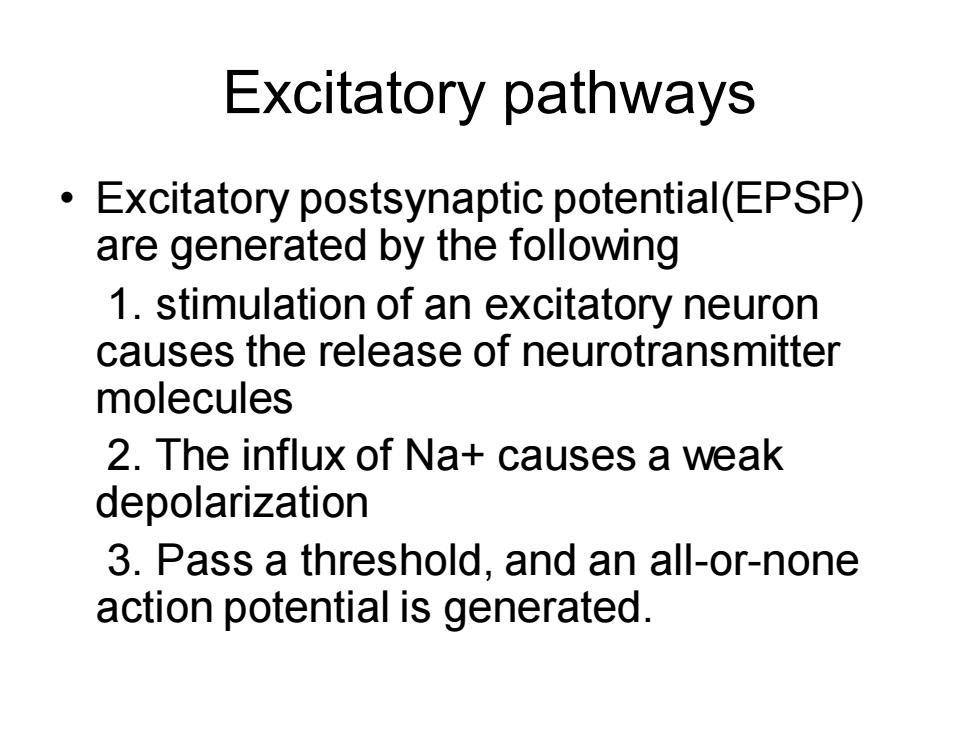
Treatment of Parkinson's disease
Treatment of Parkinson’s disease

Overview of CNS Act presynaptically by influencing the production,storage,or termination of action of neurotransmitters. Other agents may activate or block postsynaptic receptor
Overview of CNS • Act presynaptically by influencing the production, storage, or termination of action of neurotransmitters. • Other agents may activate or block postsynaptic receptor

Neurotransmission in the CNS Similar to autonomic nervous system The circuitry of the CNS is much more complex than the autonomic nervous system Contains powerful networks of inhibitory neurons that are constantly active More than 10 neurotransmitters
Neurotransmission in the CNS • Similar to autonomic nervous system • The circuitry of the CNS is much more complex than the autonomic nervous system • Contains powerful networks of inhibitory neurons that are constantly active • More than 10 neurotransmitters

Synaptic potentials Receptors at most synapses are coupled to ion channels. Depolarization or hyperpolarization of the postsynaptic membrane,depending on the specific ions that move and the direction
Synaptic potentials • Receptors at most synapses are coupled to ion channels. • Depolarization or hyperpolarization of the postsynaptic membrane, depending on the specific ions that move and the direction

Excitatory pathways Excitatory postsynaptic potential(EPSP) are generated by the following 1.stimulation of an excitatory neuron causes the release of neurotransmitter molecules 2.The influx of Na+causes a weak depolarization 3.Pass a threshold,and an all-or-none action potential is generated
Excitatory pathways • Excitatory postsynaptic potential(EPSP) are generated by the following 1. stimulation of an excitatory neuron causes the release of neurotransmitter molecules 2. The influx of Na+ causes a weak depolarization 3. Pass a threshold, and an all-or-none action potential is generated